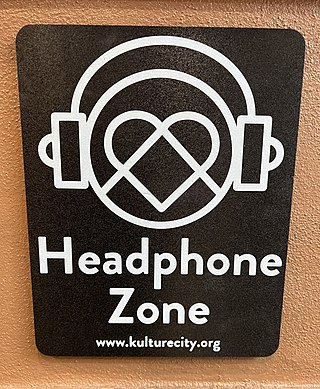

A kiondo is a handwoven bag made from indigenous vegetable twine with leather trimmings. It is indigenous to the Taita, Kikuyu and Kamba tribes of Kenya.
The Swahili word for a kiondoo is 'chondo,' plural 'vyondo'.


A kiondo is a handwoven bag made from indigenous vegetable twine with leather trimmings. It is indigenous to the Taita, Kikuyu and Kamba tribes of Kenya.
The Swahili word for a kiondoo is 'chondo,' plural 'vyondo'.

Kustom Kulture is the artworks, vehicles, hairstyles, and fashions of those who have driven and built custom cars and motorcycles in the United States of America from the 1950s through today. It was born out of the hot rod culture of Southern California of the 1960s.

Konvict Muzik is a record label founded by R&B singer Akon in 2004. Artists including T-Pain, Kat DeLuna, Mali Music, Red Café, Dolla, Ya Boy, and Costa Titch have signed to and released singles or albums by the label. Heard at the beginning of many of the label's recordings, besides Akon's own production or songwriting contribution, is the sound of the clank of a jail cell, followed by Akon uttering "Konvict". In 2022, the label was rebranded into Konvict Kulture. By 2011, Fotemah Mba was appointed Vice President of A&R for the label.
The Belize Premier Football League (BPFL) (Caribbean Motors Cup) was the premier division of association football in Belize sanctioned by the Football Federation of Belize. The league disbanded in 2011 after the merger with the Super League of Belize to create a new top league in Belize, the Premier League of Belize.
CK Deluxe is a magazine published by Geno DiPol and Koolhouse Publications, featuring Kustom Culture lifestyles, Pin-Ups, Hot Rods, Customs, and Artwork. This magazine has a huge cult following in the US and along with Ol' Skool Rodz are considered by many as good references for the Modern Car Kulture Enthusiast.

Ol' Skool Rodz was a bimonthly magazine that was published from 2003 to 2023, first by Geno DiPol and Koolhouse Publications, and then by Murphos Publishing in Buda, Texas since 2019. The magazine features topics such as Kustom Kulture lifestyles, pin-ups, rat rods, custom cars, and artwork. Its articles are often written in a humorous and irreverent style, and it has documented the work of leading custom car builders such as Bo Huff. The publication is known for setting fashion and hairstyle trends in the Kustom Kulture scene. The magazine is based in New Jersey. It has a widespread cult following in the Kustom Kulture scene and is considered an authoritative view of this subculture's lifestyle.
ČT24 is a 24-hour news channel in Czech, owned and operated by Czech Television. The channel was launched on 2 May 2005.

Krk is the main settlement of the island of Krk, Croatia.
Franjo Bučar State Award for Sport is the highest recognition that Republic of Croatia gives for extraordinary achievements and contributions of remarkable meaning for the development of sport in Croatia.
Vokopolë Castle is a castle in Berat, Albania. It is on a hill at 765 m over the sea level, northwest of Vokopolë, in the Ballolli region, close to the city of Berat. It is a monument of cultural heritage, recognized as such on 8 January 1977 in the Berat County, Albania.

In Albania, a cultural monument is a construction or work of cultural, historical and artistic value that is built in a visible space, made in memory of important events or prominent people. Cultural monuments are usually under state protection as they are evidence of the history of human development, for the preservation of which there is a public interest.

The Ministry of Economy, Culture and Innovation is a department of the Albanian Government responsible for the implementation of economic, cultural affairs and innovation. Blendi Gonxhja is the minister serving since January 2024.

The Hermitage and Monastery of Saint Peter Koriški is a ruin of the hermitage and monastery located in Koriša, Prizren municipality, Kosovo. The monastery and hermitage are on the same location.
Olićko Lake is a lake of Bosnia and Herzegovina, the lake is near of village Olići, in the municipality of Šipovo.

The Church of St. Stephen in Borovo is a Serbian Orthodox church in eastern Croatia. The church was built in the period from 1761 to 1764. First educational activities in the village were carried out under its patronage. Church is listed in Register of Cultural Goods of Croatia. Iconostasis with 49 icons and other inventory is also specifically listed in Register.

Church of the Nativity of the Theotokos in Gaboš is Serbian Orthodox church in eastern Croatia. Restoration of church in Gaboš were funded by the Ministry of Religion of Serbia, Ministry of culture from Croatia and donations.
Stolice is a part of the village Brštica near Krupanj in Serbia. It became known in history as the place where the military-political advising executives of the National liberation movement of Yugoslavia held their session on 26 September 1941.

Terra Kulture is an arts and culture center in Lagos, Nigeria with an attached restaurant.

Dom kulture Čačak is a cultural center located in Čačak, Serbia.

KultureCity is a nonprofit organization which trains staff at venues and then certifies venues which have sensory inclusive modifications. The organization also provides application for Apple and Android devices which lists Sensory friendly venues to assist those with Sensory processing disorders.